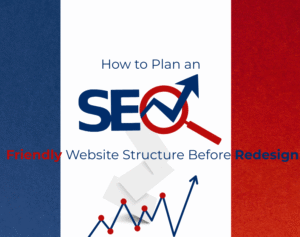When we talk about modern web development, responsive design isn’t just a nice-to-have feature anymore—it’s become the foundation of successful SEO strategies. At Utah Digital Marketing Experts, we’ve witnessed firsthand how responsive web design can make or break a website’s search engine performance.
Here’s the thing: your website’s mobile experience now determines how Google ranks your site, even for desktop searches. It sounds backward, doesn’t it? But this shift reflects how dramatically user behavior has changed.
What Makes Responsive Design So Crucial For SEO?
Mobile devices drive 64% of global web traffic in 2025, and Google has fully embraced mobile-first indexing since 2023. This means search engines primarily crawl and evaluate the mobile version of your website to determine rankings across all devices.
Think about it this way—if Google’s crawlers can’t properly access or understand your mobile site, you’re essentially invisible to the majority of online users. We’ve seen businesses lose significant organic traffic simply because their mobile experience didn’t meet search engine standards.
The Mobile-First Reality Check
Google now predominantly uses the mobile version of your website for ranking and indexing, making responsive design a critical factor rather than an optional enhancement. When we audit client websites, we often discover that even minor mobile usability issues can tank search rankings.
The shift isn’t arbitrary—74% of people are likely to return to a site if it’s optimized for mobile. User behavior drives search algorithm changes, and Google rewards sites that deliver seamless experiences across devices.
How Responsive Design Directly Impacts Your Search Rankings
Let me break down the specific ways responsive design influences your SEO performance:
User Experience Signals Matter More Than Ever
Search engines track user behavior metrics like bounce rate, time on page, and click-through rates. Mobile responsive websites load faster on both mobile and desktop devices, which directly improves these engagement signals.
When users can easily navigate your site regardless of their device, they stay longer and engage more deeply with your content. This sends positive signals to search engines about your site’s quality and relevance.
Page Speed Performance Gets a Boost
Here’s something interesting we’ve noticed in our web design projects—responsive sites typically load faster than separate mobile versions. Page load speed plays a vital role in user experience and SEO rankings, especially in mobile SEO.
The technical architecture of responsive design often results in cleaner code and optimized resource loading, which search engines absolutely love. Faster sites rank higher, period.
Avoiding Duplicate Content Penalties
One major advantage of responsive design is maintaining a single URL structure across devices. Responsive website design best practices emphasize creating a single, mobile-responsive version of your website, which can help prevent URL duplication across two versions of your site.
This eliminates the risk of duplicate content issues that can arise when maintaining separate mobile and desktop sites. Search engines prefer clean, unified content structures.
The Technical SEO Benefits You Can’t Ignore
Simplified Site Architecture
Managing one responsive website is infinitely easier than maintaining multiple versions. This streamlined approach reduces the complexity of your SEO strategy and eliminates potential technical conflicts between different site versions.
We’ve found that responsive sites are easier to crawl for search engine bots, leading to more comprehensive indexing of your content. Better crawling means better visibility in search results.
Enhanced Local SEO Performance
For businesses focusing on local SEO, responsive design becomes even more critical. Mobile devices facilitate 64 percent of global web traffic, and many of these searches have local intent.
When someone searches for services “near me” on their phone, your responsive site needs to deliver immediate value. Google prioritizes locally relevant, mobile-friendly results for these queries.
Core Web Vitals and Performance Metrics
Google’s Core Web Vitals—Largest Contentful Paint (LCP), Interaction to Next Paint (INP), and Cumulative Layout Shift (CLS)—are heavily influenced by responsive design quality.
A well-implemented responsive design naturally improves these metrics by ensuring consistent layout behavior and optimized loading patterns across devices. Poor mobile implementation often leads to layout shifts and slow loading times that hurt your rankings.
The Real-World Impact on Business
We’ve tracked clients who improved their responsive design implementation and consistently see:
- Increased organic traffic within 30-60 days
- Lower bounce rates across all devices
- Higher conversion rates from mobile visitors
- Improved rankings for competitive keywords
The connection between responsive design and business outcomes is undeniable.
Future-Proofing Your SEO Strategy
Technology continues evolving, and screen sizes keep changing. A responsive design ensures your website adapts to new devices without needing a complete redesign. This adaptability protects your SEO investment over time.
Whether users access your site from tablets, smartphones, smartwatches, or whatever comes next, responsive design ensures consistent performance. This future-proofing aspect makes responsive design a smart long-term SEO investment.
Beyond Just Mobile Compatibility
Modern responsive design encompasses more than screen size adaptation. It includes touch-friendly navigation, readable typography, optimized images, and streamlined content hierarchy—all factors that search engines evaluate when determining rankings.
Integration With Other Marketing Channels
Responsive design doesn’t exist in a vacuum. It supports your broader marketing efforts, including paid advertising campaigns and social media marketing.
When users click through from social platforms or paid ads, they expect a seamless experience regardless of their device. Responsive design ensures you don’t lose potential customers due to poor mobile experiences.
The Bottom Line on Responsive Design and SEO
Responsive web design is no longer just a trend—it’s a necessity for SEO success in 2025. Google’s mobile-first approach means your mobile experience directly impacts your search visibility across all devices.
The data is clear: businesses that prioritize responsive design see better search rankings, increased organic traffic, and improved user engagement. It’s not just about meeting technical requirements—it’s about creating experiences that users and search engines both value.
Your website’s responsive design directly influences how search engines perceive your brand’s credibility and user-focus. In today’s competitive environment, you simply can’t afford to ignore this critical aspect of SEO.
Ready to optimize your website’s responsive design for better search rankings? Schedule a consultation with our team to discover how we can improve your site’s mobile performance and boost your SEO results.




